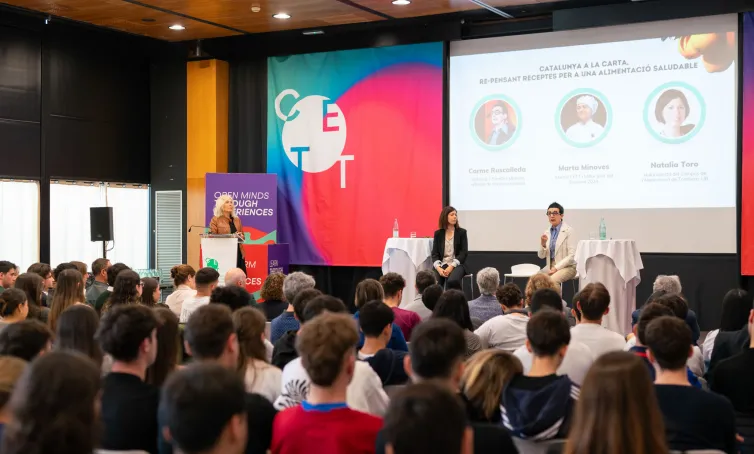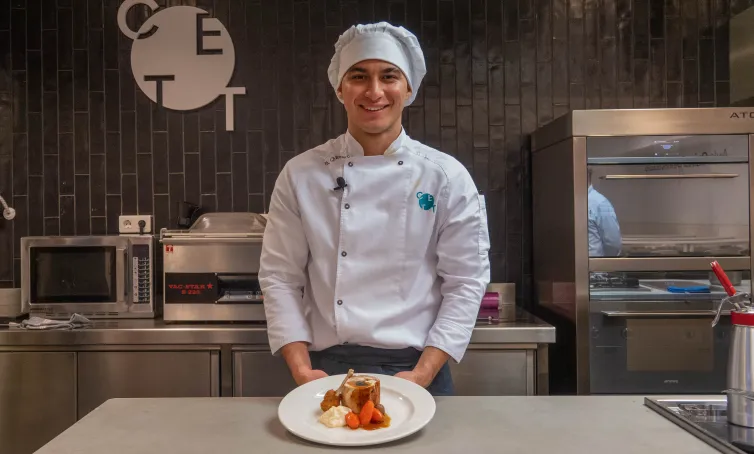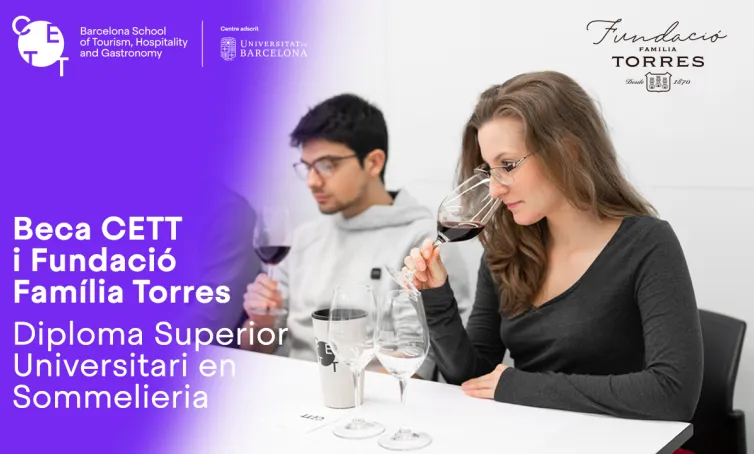XIX Trobada Gastronòmica | Dr. Helena Martin: “Cooking is an emotional, sensory and social act with a direct impact on health”

We spoke with Dr. Helena Martin, director of the Cooking and Gastronomy Research Group at CETT to learn in depth about the impact of cooking and food on health.
The 19th Gastronomic Gathering at CETT focused on the relationship between food and health, with particular attention to the healthcare sector. Far from being viewed solely as a nutritional tool, food is increasingly recognized by professionals for its emotional, sensory, and social value.
We interviewed Dr. Helena Martín, director of CETT’s Research Group in Cooking and Gastronomy and professor of the Bachelor's Degree in Culinary and Gastronomic Sciences, to explore how a meaningful gastronomic experience can improve patient well-being—and how the training of future chefs can have a real impact on people's health.
- The XIX Trobada Gastronòmica focused on the relationship between cooking and health, with emphasis on the health field. Why is it important to pay attention to the quality of the menus beyond the nutritional function?
Because eating is not only a nutritional act, but also an emotional, sensory and social one. In the healthcare environment, taking care of the gastronomic quality of menus to improve the patient's experience, encourage adherence to the diet and even contribute to a better recovery.
- How can the gastronomic experience influence the emotional state and recovery of people admitted to hospitals or health centers?
From CETT and the Cooking and Gastronomy Research Group, we investigate how the gastronomic experience, understood as a cultural, sensory and emotional act, can contribute to personal well-being. Eating well is not only eating in a balanced way, but also enjoying, connecting with the territory, with the roots and with people.
We believe that the gastronomic experience can help to create a more welcoming and human environment in a context as cold as a hospital, nursing home or clinic. Eating dishes that evoke memories, visually attractive and adapted to the patient's preferences or culture, can awaken positive emotions, generate memories, and even encourage the desire to eat, which is key in certain pathologies.
- From a gastronomic approach, what “simple” changes could be implemented in this type of menus to make them more attractive without losing their nutritional function?
At CETT we investigate how small changes can have a big impact. For example, incorporating culinary techniques that enhance flavors, such as cooking at low temperature or marinating, the use of spices and aromatic herbs, improving the presentation with pleasant and creative colors and textures or adapting traditional recipes with healthy criteria.
- What role does the training of cooking and gastronomy professionals play in hospitals to ensure that menus find the balance mentioned above?
It is fundamental. Trained cooks with scientific, nutritional and gastronomic knowledge can be a key part of transforming hospital cuisine. We need to stop thinking of cooking only as a domestic or creative practice, and start seeing it as an educational, sensory and cultural lever with a direct impact on health. In this sense, from the Culinary and Gastronomic Sciences Degree at CETT we train professionals with a holistic view: with knowledge in nutrition, health, advanced culinary techniques, sustainability, creativity and business.
- How do you see the future? Do you think that gastronomy in the healthcare field can become a more specialized field, with chefs and nutritionists working in a more collaborative way? Do you think there is room for new professional profiles?
I think the future is going towards greater specialization and collaboration between chefs, dietitians and healthcare professionals. New hybrid professional profiles are opening up that combine creativity, science and cuisine and new training courses are emerging to respond, such as the new Bachelor’s Degree in Food Systems Design from CETT and Elisava, a pioneering training.
In addition, from CETT we are promoting collaborations with hospitals such as Vall d'Hebron and Tries i Pujol (Can Ruti) and research and health centers, and spaces like this year's Trobada Gastronòmica are key to create synergies and consolidate this more inclusive future.
- As director of the Cooking and Gastronomy Research Group at CETT and professor of the Culinary and Gastronomic Sciences Bacelor’s Degree, could you give us examples of how CETT incorporates health treatment in gastronomic matters?
At the research level, from the Research Group we work on projects related to the development of new products for patients with certain pathologies, the adaptation of dishes to specific pathologies and the reformulation of recipes to reduce and/or substitute ingredients.
On the training side, we are constantly evolving. For example, this year, from the Endocrinology and Nutrition Service of Can Ruti Hospital, with whom we collaborate in a Therapeutic Cooking project, we have been asked to give a talk to our students to share the project with them and let them know about other job opportunities and areas of work.



